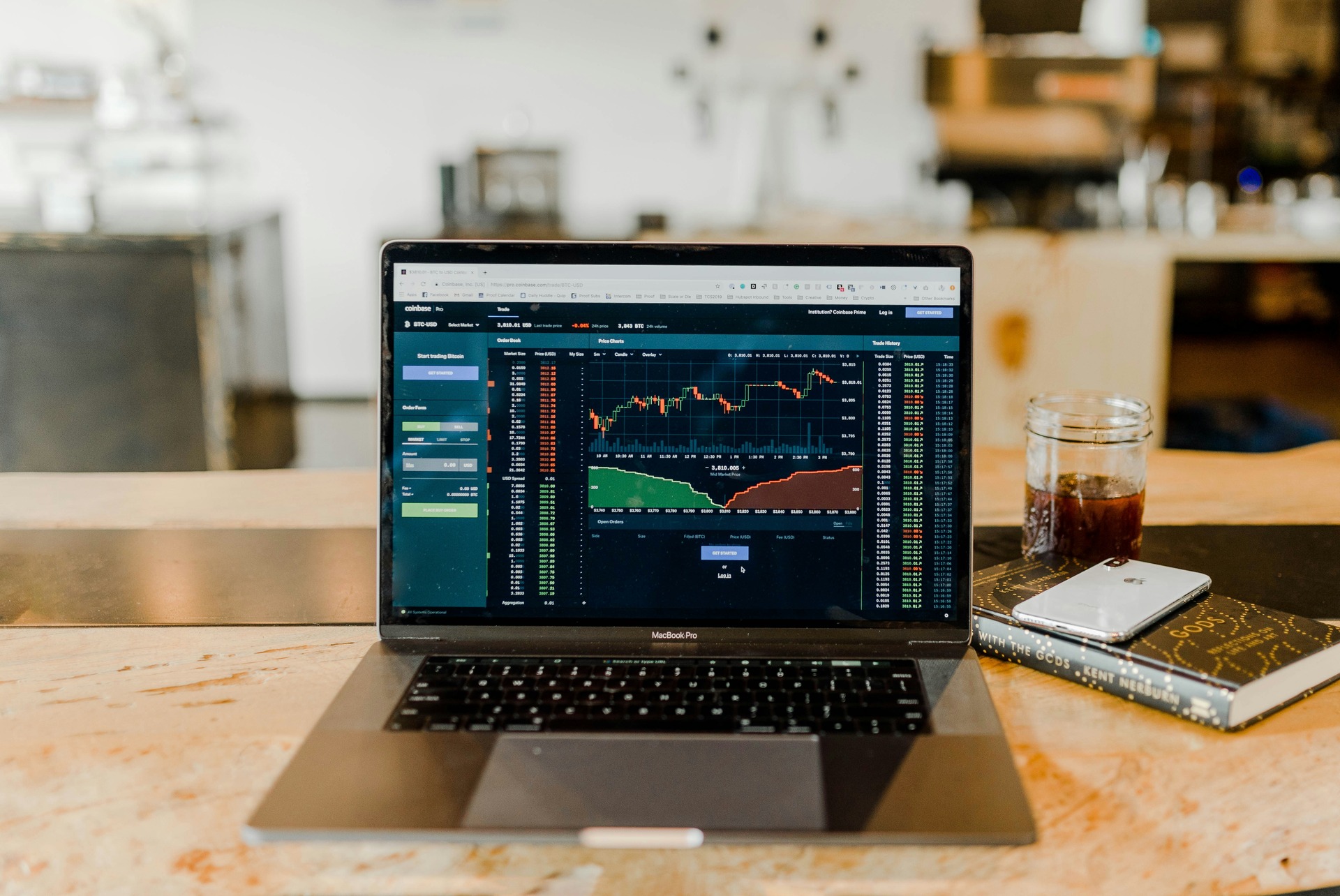Market Correction – What is Ahead for Investors!
31 October 2025
Introduction
Since November 2023 US stocks have rallied almost 30% until the recent drawdown that started in early April. The S&P 500 was down as much as 5.5% in April before the last week’s bounce. Growth-sensitive Nasdaq Index was down nearly 8%, while small-cap stocks were down by a similar amount in April.
By contrast, traditional safe-haven asset gold is up over 5%, even as US government bonds sold off. Yields on the 10-year US Treasury have risen to about 4.6% from under 4.2% in March as investors' price-in for fewer Fed rate cuts for 2024. It is entirely normal for corrections of this magnitude in bull markets, especially after the rally we have seen in the past few months, and the pullback is still modest.
The big question for investors today is whether this is just a mid-cycle correction or a harbinger of broader correction risk assets. To assess this, we must look at the factors that triggered the market correction in April and how long they are likely to persist.
To us, three main factors are behind this correction. The first and perhaps the most significant of all is the higher-for-longer back into foray after a series of hotter-than-expected inflation prints as well as stronger economic data in the US. Ongoing geopolitical tensions in the Middle East have contributed to the already fragile sentiment. A more nebulous and perhaps a bit contentious third factor is investor positioning and euphoria around AI-related stocks since the start of the year.
Higher-for-longer is driving bond yields higher
The recent economic data in the US has been stronger than expected. At the same time, Inflation data has not eased as investors were expecting. Both these factors have forced the Fed officials to change their tone with regard to the future path of interest rates. In January, the investors were expecting the Fed to cut 3-4 times this year starting as early as June. This, however, has now been cut back to just one or two rate cuts this year starting in November/December.
As a result, bond yields in the US have risen across the board since late March. This rise in bond yields in a short period is putting pressure on equities, particularly on growth-sensitive stocks. Investors are also concerned that with sticky inflation and strong economic data, the Fed may have to hike again in 2025. To us, the likelihood of that is low unless there is a sustained re-acceleration of inflation, which we don’t see at this stage.
The upshot is that we do not see bond yields in the US rising much further from their current level. The 10-year yield could temporarily move towards a 4.75% area, but we don’t see them spending much time around there, as softer economic data takes hold. In fact, Q1 GDP estimates last week have come much lower than expected. We believe yields will ultimately trend lower in the second half, and by Autumn we could see most of the current rise being unwounded. However, for yield to go back below 4%, we would need to see a significant deterioration in the economic data and inflation to slow down materially from here.
All in all, we expect yields to moderate from their current levels (4.65%) as both growth and inflation will eventually moderate. Consumer spending will ease as the year progresses. Rental inflation which is roughly a third of the CPI basket is likely to ease in the second half. Finally, as the labour market balance improves wage growth should continue. All these make the threat of an inflation reacceleration a low risk. However, we may not see more than one or two rate cuts for this year.
Ongoing Tensions in the Middle East
Heightened tensions between Israel and Iran have triggered turmoil in global markets. What initially began as an airstrike has rapidly evolved into a precarious standoff, with both sides exchanging threats of retaliation. Investors worldwide are gripped by anxiety, leading to widespread uncertainty and market instability. Israel’s airstrike in early April targeting Iranian military officials has further escalated tensions, with Iran vowing to retaliate and Israel fortifying its defences. The conflict has a few implications for the global economy:
Market Turmoil: Global markets are feeling the strain. Oil prices had risen over $90 per barrel in early April, signalling fears of supply disruptions. However, prices have retreated since then. Global stocks have taken a hit and uncertainty is forcing investors to rethink their strategies as consumers and businesses hold back on spending and investments.
**Impact on Oil:**there is an increasing fear that Iran’s control of the Strait of Hormuz, a critical oil passage, could disrupt the oil supply, leading to higher energy costs globally. Although the risks of this happening have subsided in the past few weeks, however, if Iran were to cut the supplies through the Strait it would send a significant shock through the oil market. Under that scenario, we could see oil prices well above $120.
**Rise in gold prices:**gold prices are on the rise as investors seek safe-haven assets amid uncertainty, driving its value up as a hedge against heightened volatility.
Inflation and Interest Rates: Rising oil prices would hamper central banks’ efforts to manage inflationary pressures around the world. Although the likelihood of this happening is low, but if we see a sustained reacceleration in inflation the Central Banks will be forced to raise rates or delay the rate cuts into 2025.
Investor Euphoria around AI Stocks
Since the start of the year, there has been a growing interest in generative artificial intelligence amongst investors. This is evident from increased internet searches, media coverage, and discussions during the recent quarter earnings calls from the companies. As a result, AI-related tech stocks such as NVIDIA, AMD, TSMC, and other semiconductor names have rallied significantly this year. However, the real test is whether AI stocks can live up to these elevated earnings expectations and will be a key focus for the Q1 earnings season..
Good start to Q1 earnings
We are in the midst of Q1 earnings season. It is still early with nearly a quarter of the S&P 500 companies reported to date. So far, the results have been good with the majority of big technology companies including Tesla, Microsoft, Meta, and Alphabet (Google) all delivering good earnings resulting in a significant rebound in share prices in the last week. Arguably, earnings expectations are still high, particularly for the tech sector and stocks have rallied sharply in the first quarter to reflect this. That said, from the results we have seen so far, we don’t see major downward surprises on the card for this earnings season.
Conclusion
Summing it all up, we believe that the negative reaction in April has been largely due to the factors we discussed above, i.e. risks around inflation, rising bond yields, and ongoing geopolitical tensions in the Middle East. Recent economic data has been strong in the US. Rebound in other major economies is also a tailwind to the global macro backdrop. Central banks will embark on their rate cutting rates cycle this summer with the ECB starting as early as June and the Bank of England likely to follow soon after. The Fed in the US will likely start cutting rates towards the end of this year. This we believe is supportive of risk assets over the medium term, and we see the April correction as an air pocket in the ongoing recovery in the market.
Discover Similar Insights
Every day, our experts deliver fresh insights on trending topics,
sectors and markets to help you stay ahead of the curve.

I Inherited a windfall - it was a blessing and a curse
"If you don't do the personal work of really acknowledging your privilege, understanding your responsibility to redistribute away resources and your power - and so sometimes acknowledging the fact that you're not the best person to make those investment or philanthropic decisions - then, of course, the whole thing doesn't work." “Unfortunately for some other of my relatives who received the money, ended up corrupting their lifestyle and also their mental health, so it wasn't good for them, and that money was wasted." Some $90 trillion (£69 trillion) will be transferred to American millennials

Dividend Stocks – potential to Outshine Bonds in a Low Interest Rate Environment
Introduction As we approach September 2024, a significant shift in the financial landscape looms large. The Federal Reserve, having spent much of the past few y…

Hotel Tycoon Takes £6m Life Insurance to Shield Business from Inheritance Tax Hike
‘I’m insuring my life for £6m to protect family from IHT raid’ More business owners are seeking policies to protect their assets from ‘death tax’ for after they…

The Magnificent Seven’s impact on the S&P 500
Market Concentration and the “Magnificent Seven” The S&P 500, a key barometer of the US stock market, is currently exhibiting a remarkable degree of market conc…